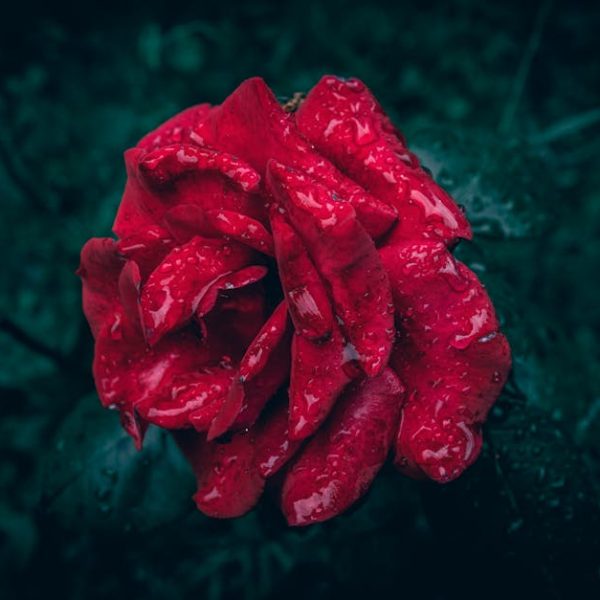Visualize this: A garden lush with vibrant, green leafy plants adorned with bright red kidney beans. Imagine the pride of eating a dish made with beans harvested from your own garden. Sounds dreamy, right? Well, you’ll be interested to know that growing kidney beans is a straightforward and rewarding venture, as long as you know the basics. Let’s enter the world of gardening and learn how to plant kidney bean seeds.
Selecting the Right Kidney Bean Seeds
When setting off on your bean-growing journey, your first step is to get your hands on some high-quality kidney bean seeds. It might be tempting to grab the first packet of seeds you see, but here’s the thing: not all seeds are created equal.
One key aspect to consider when buying seeds is the type. Several varieties of kidney beans have their unique growth habits and climate preferences. However, most varieties prefer warm weather and don’t tolerate frost. Also, choose seeds that are dry, smooth, and hard with no signs of damage or disease.
Here are a few best practices when choosing kidney bean seeds:
– Buy from accredited sellers: This ensures that the seeds are of high quality and free from pests and diseases.
– Save seeds: If you’ve grown beans before, consider saving some seeds. Just make sure they’re dry and stored in a cool and dry place.
Preparing the Garden Soil
Once you’ve armed yourself with the right seeds, the next step is preparing your soil. Remember, the key to a successful kidney bean plant lies in the soil. The soil should be well-drained and not too acidic or alkaline. A neutral PH level is ideal for kidney beans.
Here’s a checklist for soil preparation:
– Drainage: Kidney beans don’t like soggy feet. Therefore, make sure your soil drains well to avoid waterlogged conditions.
– Organic matter: Add compost to your soil. This improves drainage and boosts soil fertility.
– PH Level: Check the PH level of your soil. Kidney beans prefer a neutral to slightly acidic PH level. Organic matter can help stabilize your soil’s PH level.
Seeding Process
Now we get into the fun part, putting those precious seeds in the soil. Planting depth is crucial for kidney beans. Plant seeds 1 inch deep, and space them about 2 inches apart within the row.
However, there are pros and cons to planting the seed directly in the soil:
– Pros: Quick germination, avoiding transplant shock.
– Cons: Seeds are more vulnerable to pests, weather extremities and soil borne diseases.
Some tips for successful seeding:
– Timing is key: Plant after the last spring frost and the soil has warmed considerably.
– Watery balance: Water regularly but don’t overdo it. The soil must be moist, not waterlogged.
Next, we’ll delve into caring for your plants, harvesting beans, and storing your harvest in our following segment. Remember, any gardener is only as good as their care and maintenance schedule. Stay tuned!
Caring for Kidney Bean Plants
> Congratulations! Your diligent preparation and careful seeding process have paid fruit(fice!). Now, as the tiny sprouts turn into sturdy, bean-laden plants, it’s time to turn our attention towards their care.
Let’s talk about watering first. Beans are not heavily dependent on water and typically, watering once a week suffices. However, during dry periods, you might need to give extra water.
Fertilizing is another crucial aspect of nurturing your kidney bean plants. As legumes, kidney beans have the ability to fix nitrogen from the atmosphere, negating the need for nitrogenous fertilizers. Instead, a balanced, all-purpose fertilizer is beneficial.
Proper pruning and training methods can also result in a more robust and productive plant. Removing unnecessary or diseased leaves can maximize light penetration resulting in overall healthier growth.
Here are a few pro tips :
– Mulches like straw or shredded leaves can help the soil retain moisture and suppress weeds.
– Crop rotation – don’t plant beans in the same place year after year to prevent the buildup of diseases.
– Prefer natural methods of pest control. Ladybirds, spiders, and birds are all natural predators of common bean pests. Encourage them in your garden.
Harvesting and Storing Kidney Beans
The fruits (or beans, rather) of your labor are ready to be reaped. How do you know when it’s time to harvest? Typically, when pods are bright green and firm with visible, not bulging, seeds inside, it’s harvest time.
Once harvested, you need to ensure beans are properly dried before storing. Spread beans evenly and allow to dry in a well-ventilated, warm and dry area.
When it comes to storage, here are a few tips:
– Always harvest beans when the foliage is completely dry.
– Always use airtight containers for storage and keep them in a cool, dark, and dry place.
– Don’t rinse or wash beans before storage. Beans need to be completely dry to reduce the risk of mold.
That’s it! You’ve ventured through the world of kidney bean farming right from selection to storage. With dedication and a little care, you’ll have a fruitful bean harvest to enjoy. Happy gardening!
Key Takeaway:
- Choosing the right kidney bean seeds plays a crucial role in yield. Opt for seeds that are dry, smooth, and hard with no visible damage.
- The seedbed should have well-drained, fertile soil with a neutral pH, and must be enriched with organic matter or compost.
- Plant seeds at the right depth and maintain adequate space between seeds for proper growth. Timing the planting with weather and keeping the soil consistently moist is critical.
- After germination, the kidney bean plants need regular watering, pruning, and additional fertilizers. Mulching, crop rotation, and pest controlling through natural methods are recommended.
- Finally, beans should be harvested when they’re firm and bright green. Proper drying and storage in airtight containers in a cool, dark place are key for long-term use.
Seeds to crops, this journey is equally exciting and rewarding. With the correct information, determination, and a little care, you can enjoy the fruits of your labor in no time. So, roll up your sleeves, feel the soil under your fingers, and let the magic of nature unfold.
FAQs
Q: What is the optimal time of year to plant kidney bean seeds?
A: You should plant kidney bean seeds after the last risk of frost has passed and the soil has significantly warmed.
Q: How often should I water kidney bean plants?
A: Regular watering is essential, but avoid over-watering. Keep the soil moist, but not waterlogged.
Q: Can I use seeds from kidney beans bought at the grocery store?
A: It’s recommended to purchase seeds from a reliable source to ensure they are of high quality and suitable for growing.
Q: How can I naturally control pests in my kidney bean plants?
A: Encouraging natural predators of bean pests, like ladybirds, spiders, and birds, in your garden can be an effective natural method of pest control.
Q: Can I use the same plot for planting kidney beans year after year?
A: It’s advisable to practice crop rotation and avoid planting beans in the same place each year to prevent the buildup of diseases.
Feel free to share this article with your fellow gardening enthusiasts. Keep exploring our site for more insightful posts and happy gardening!






